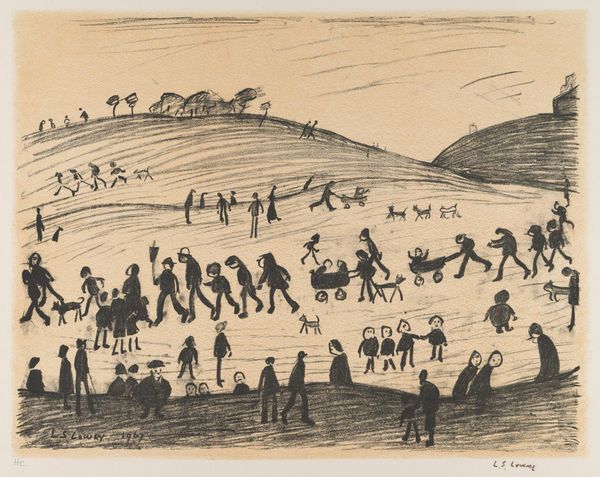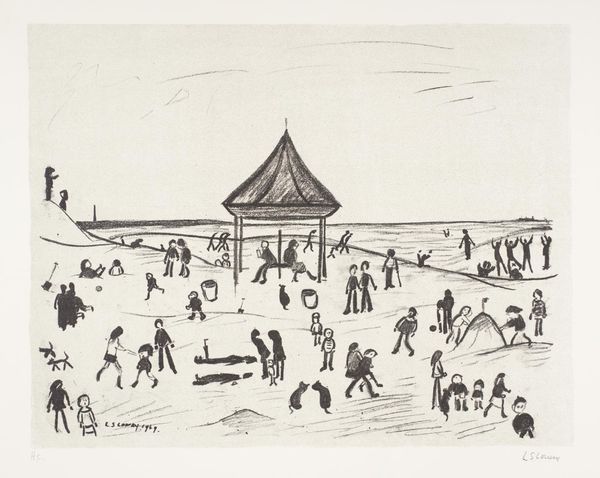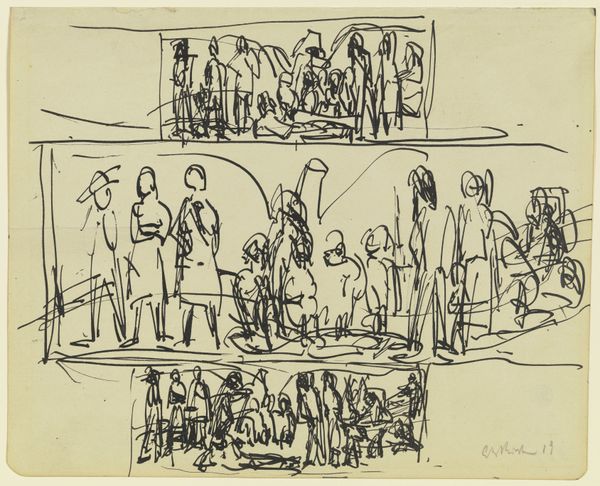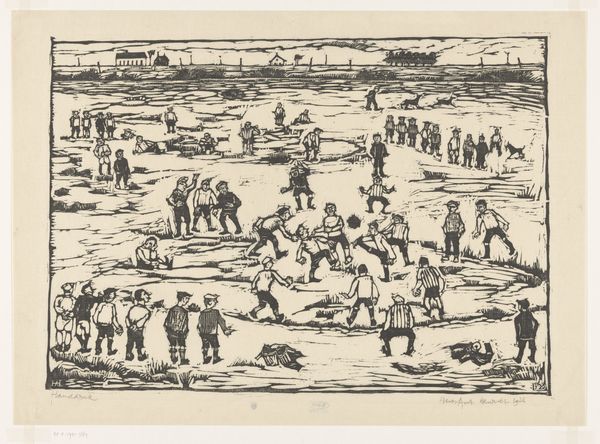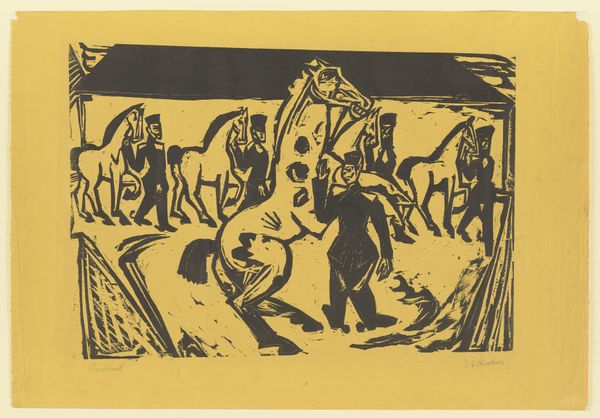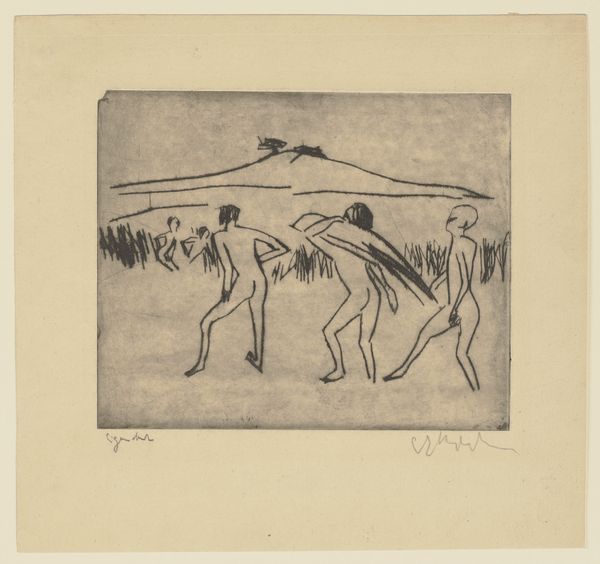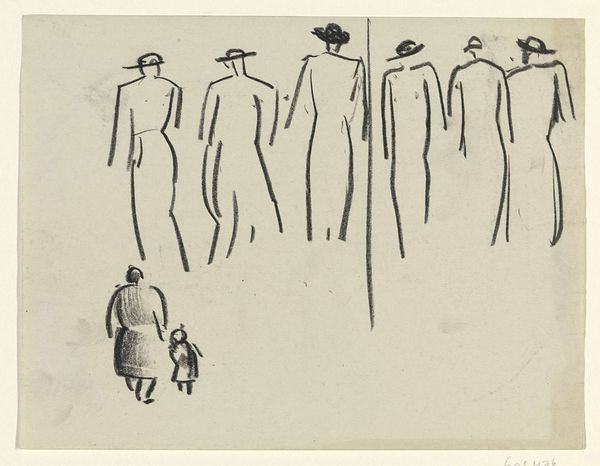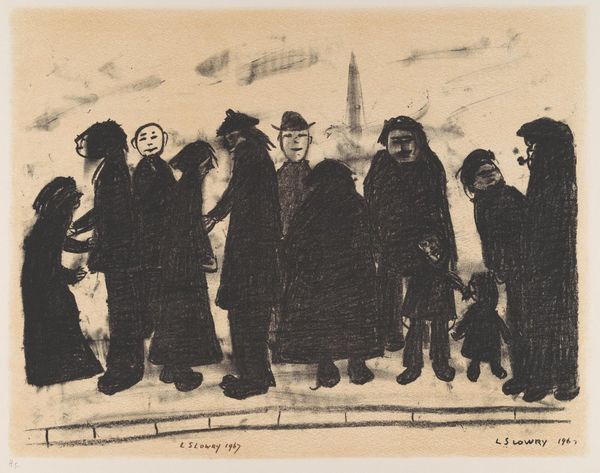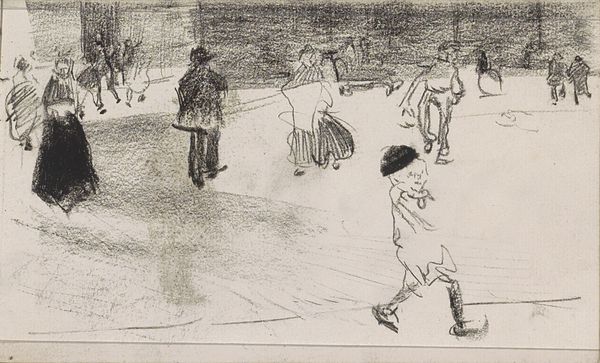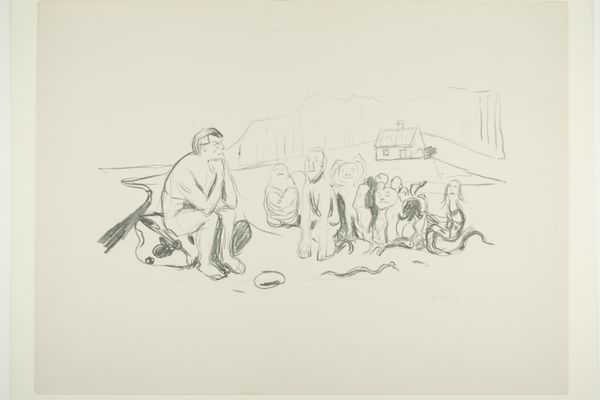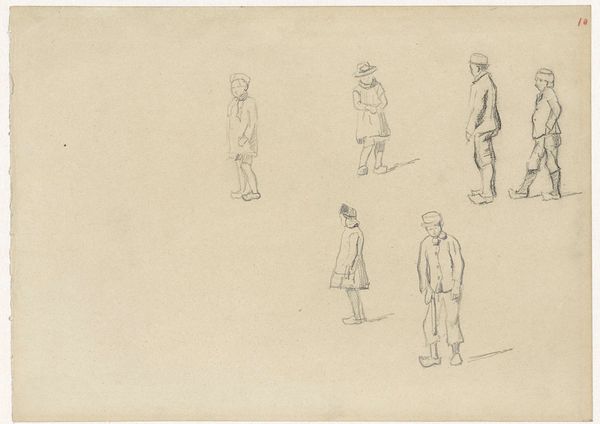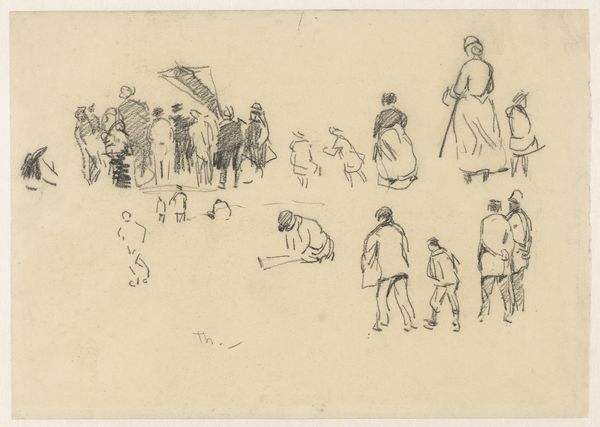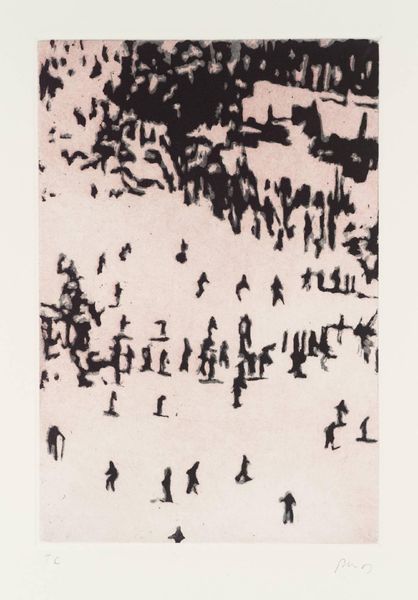
Dimensions: image: 476 x 610 mm
Copyright: © The estate of L.S. Lowry/DACS 2014 | CC-BY-NC-ND 4.0 DEED, Photo: Tate
Curator: L.S. Lowry’s "Sunday Afternoon," part of the Tate collection, presents a scene teeming with figures sketched in his signature style. What's your initial reaction? Editor: The starkness is striking. The composition, almost diagrammatic, conveys a sense of isolation despite the crowd. It is a very economical work. Curator: Lowry’s work often reflects the industrial landscapes and working-class communities of Northern England. We can consider this piece as a reflection of leisure time. The piece, with its mass of figures rendered nearly identical, raises questions about social conformity, the limitations of industrial life, and the search for identity. Editor: The figures, though, have a certain rhythm in their placement, a visual echo that carries the eye across the plane, almost like musical notes. The composition has a strange, haunting beauty. Curator: Indeed, a beauty born of its stark realism. The figures, almost like silhouettes, emphasize the loss of individuality within an urban industrial society. Editor: It is interesting how the artist renders people as objects, which could be analyzed using semiotics and structuralism. Curator: Lowry invites us to question the narratives around industrialization, labor, and leisure. Editor: A starkly beautiful piece.
